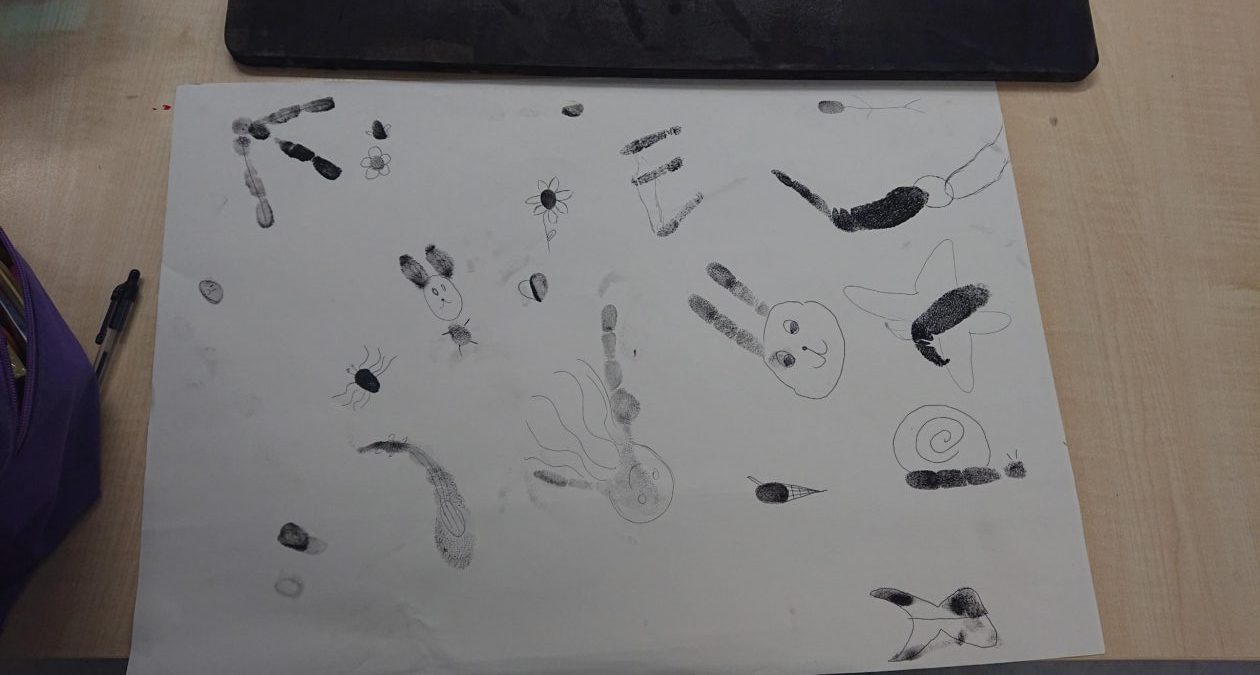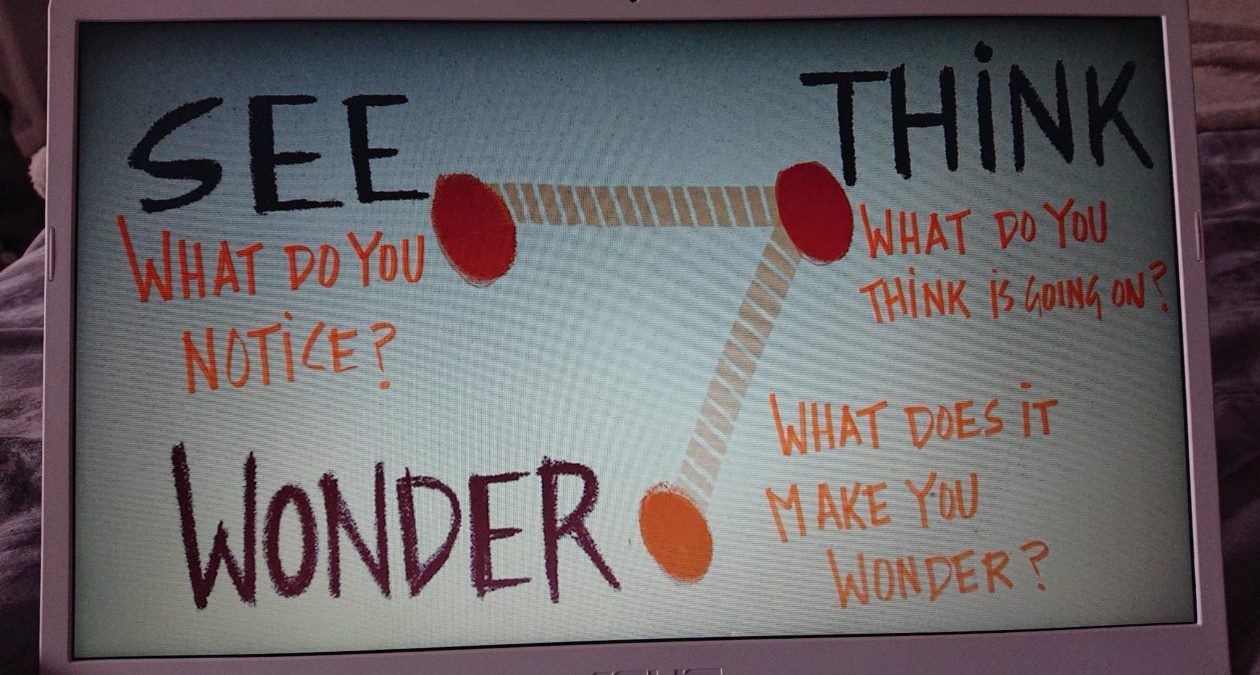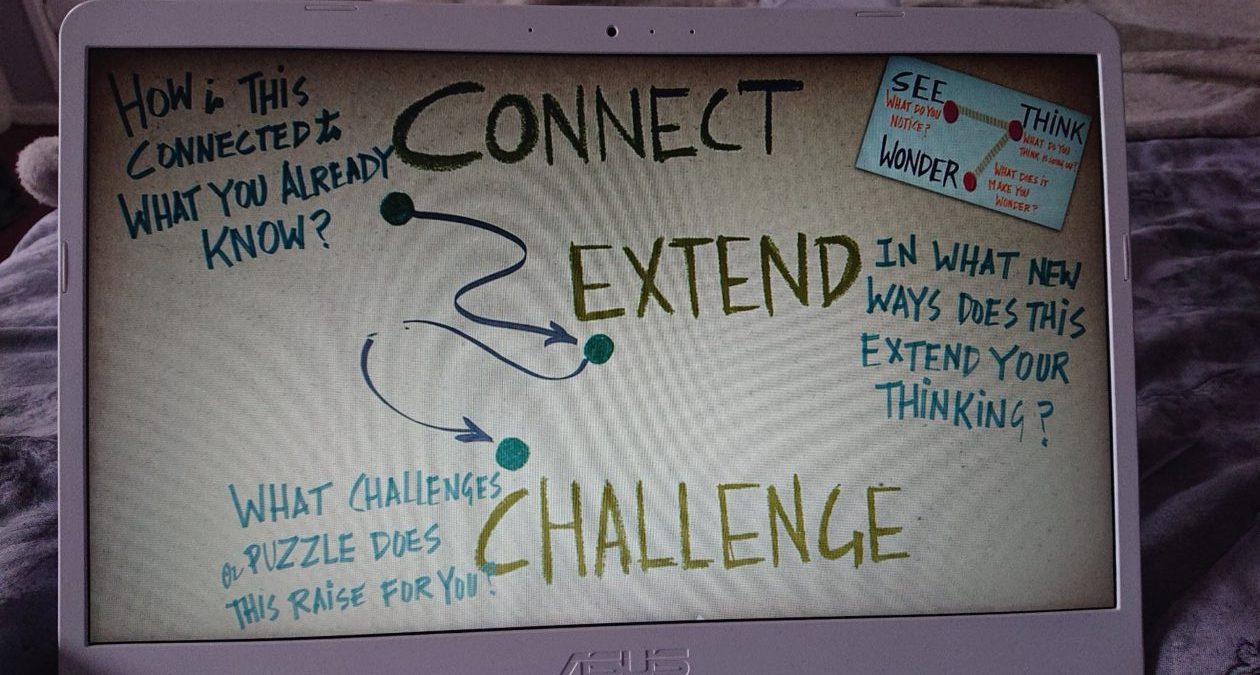In todays lecture we explored the idea of visual thinking through Flemings article on the arts in education. When I first looked at this article for pre reading prior to class I found it extremely hard to engage with as it was choppy, and I was losing my place. The concept of visual thinking combats such issues by intertwining the words with pictures that I relate to the words within the text. This is an example of visual thinking in practice:

I got a section of the article that discussed two paintings by Matisse on the theme of dance, which depict five naked dancers in bright red which contrast the green and blue of the earth and sky. I chose this area to explore visual thinking as I found the image to be a stimuli for my brain which then helped me to remember significant pints from that paragraph.
I feel this would be an extremely important prospect to develop within my classroom as it will evoke thoughtfulness within my students.David Perkins stated that teachers provoke thinking through not expecting immediate answers from their children, presenting their own uncertainties, allowing themselves time to think about the possibilities of what if and what not and encouraging their children to notice problems and opportunities and to think them through (Perkins, 2003).
This is something I would like to promote within my classroom as I feel it is extremely important for a child to be given the time to think  through a question and really understand what they are asking, as I feel this is when they give the most creative and interesting answers.
through a question and really understand what they are asking, as I feel this is when they give the most creative and interesting answers.
The idea of addressing such things as what if and what if not allows for children to understand that in live there is always more than one view point and that not everyone will always agree. It also gives them the opportunity to explore critical thinking which is a fundamental skill to develop.
From the lecture, we them moved to our visual arts seminar which today explored the idea of a dot. This was a simple exercise which began with spreading black paint over a board until it was smooth and from their dipping different parts of our hands into it and making a mark on the page.
These were some of the designs we made:

These small prints allowed us to look more deeply into the marks our hand made. At first, we found it difficult to see past the black smudge on the paper but quickly the ideas and creativity started flowing and the marks suddenly turned into butterflies and rabbits and birthday cakes. I found that this seminar corresponded well with the thinking routines found by Harvard school of education. A thinking routine is a straightforward pattern of thinking which children are able to follow and use continuously to develop their ability to look deeper than what meets the eye (Ritchhart, 2002).
This is an example of two thinking routines:


I can see the link between these thinking routines and todays lesson as I feel I followed the see, think, wonder routine. I began by looking at the dot on my page, I then started to think about what could this be? A butterfly? Through creating I then began to wonder what else I could make from something as simple as a dot or a smudge.
Visual thinking could also be seen throughout our drama input in which we look at Avril Paton’s “Windows in the west” painting.
Here is a video of Avril explaining her picture and the process of creation:
(Glasgow Museums, 2011)
After briefly looking at the picture we were asked to form groups and create a still image of what we thought was going on within one of the rooms, we were then asked to role play the same situation in the past, present and future. I related this to visual thinking as I had previously made notes on the painting and this was me visually expressing my ideas of what is happening within the painting.
The positive impacts of visual thinking are already being seen within school settings. A study by Ron Ritchhart in a school found that the classrooms which took part in visible thinking became more learning orientated and inclusive as children who had previously lacked a voice within the classroom environment including children with additional support needs, where eagerly participating more actively and confidently (Ritchhart, Palmer, Church, & Tishman, 2006).
I ultimately believe that visual thinking is a magnificent ability to foster within the classroom environment, as it not only allows for creativity, but it promotes a culture of in-depth thought. I will most definitely be implementing this within my classroom.
References
- Glasgow Museums, (2011). Avril Paton on “Windows in the West” at Kelvingrove Art Gallery and Museum, Glasgow. [Online] Available at : https://www.youtube.com/watch?v=BVDRL6wsQYU&t=392s [Accessed 18/09/19]
- Perkins, D. (2003). MAKING THINKING VISIBLE. Harvard Graduate School of Education.
- Ritchhart, R. (2002). Intellectual character: What it is, why it matters, and how to get it. San Francisco: Jossey-Bass.
- Ritchhart, R., Palmer, P., Church, M., & Tishman, S. (2006, April). Thinking routines: Establishing patterns of thinking in the classroom. Paper presented at American Educational Research Association, San Francisco.
- Ritchhart, R. (2008). Teaching students to think. Making thinking visible. Pages 57 – 61.
